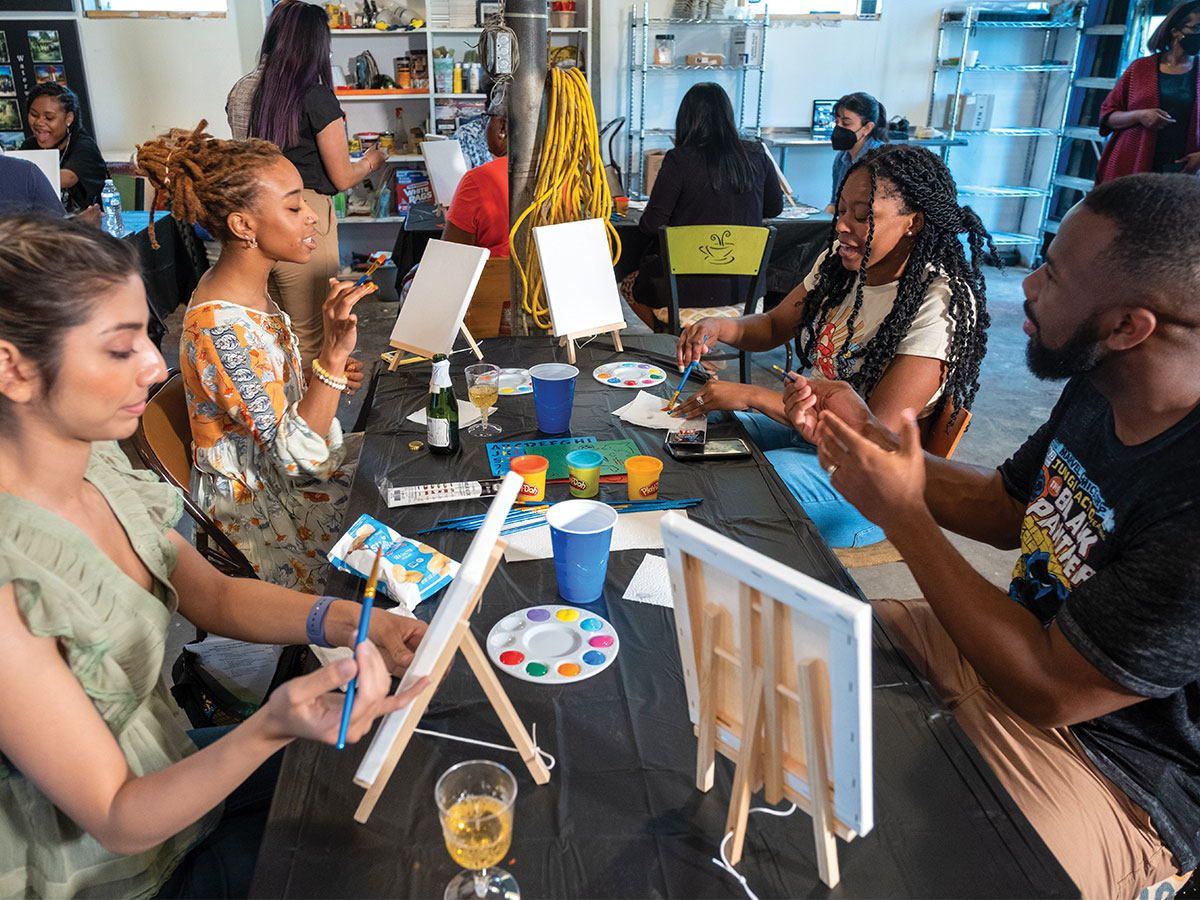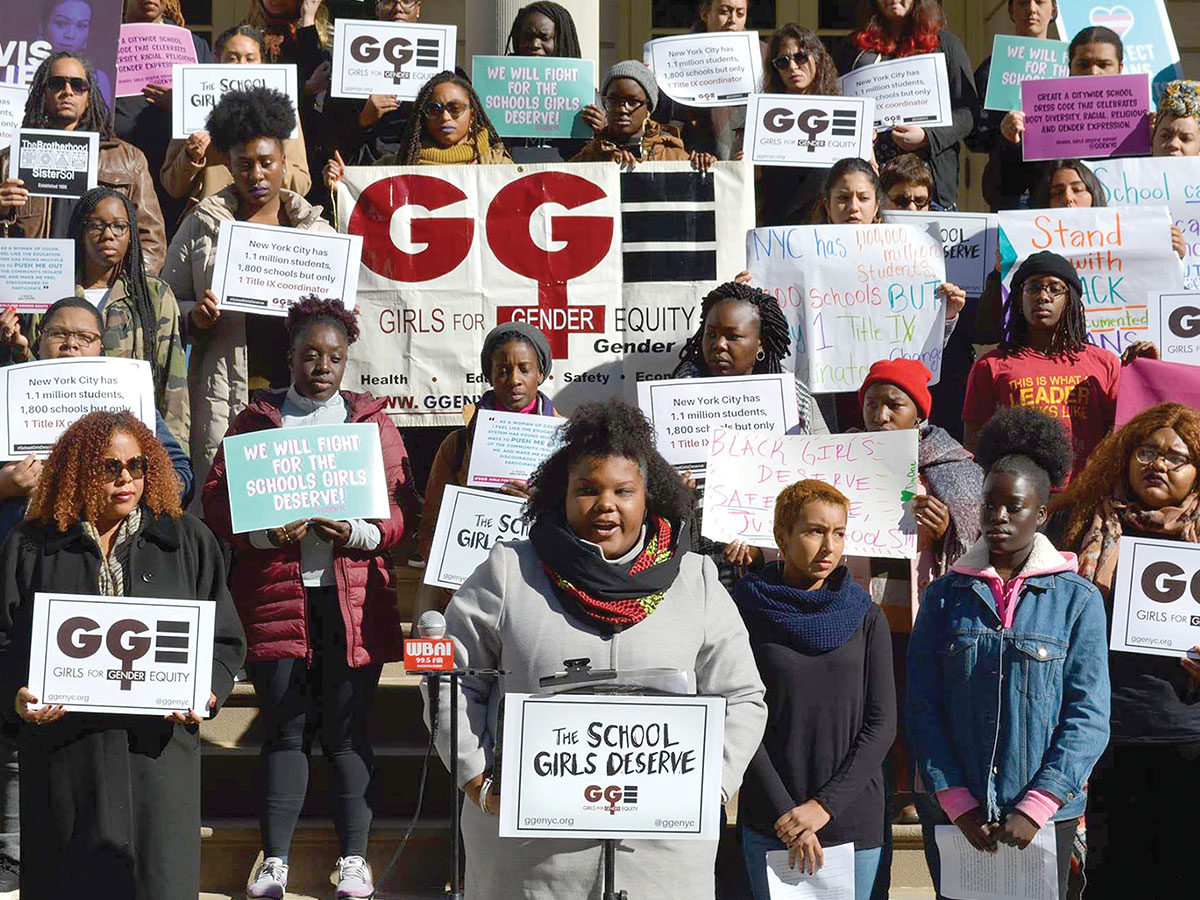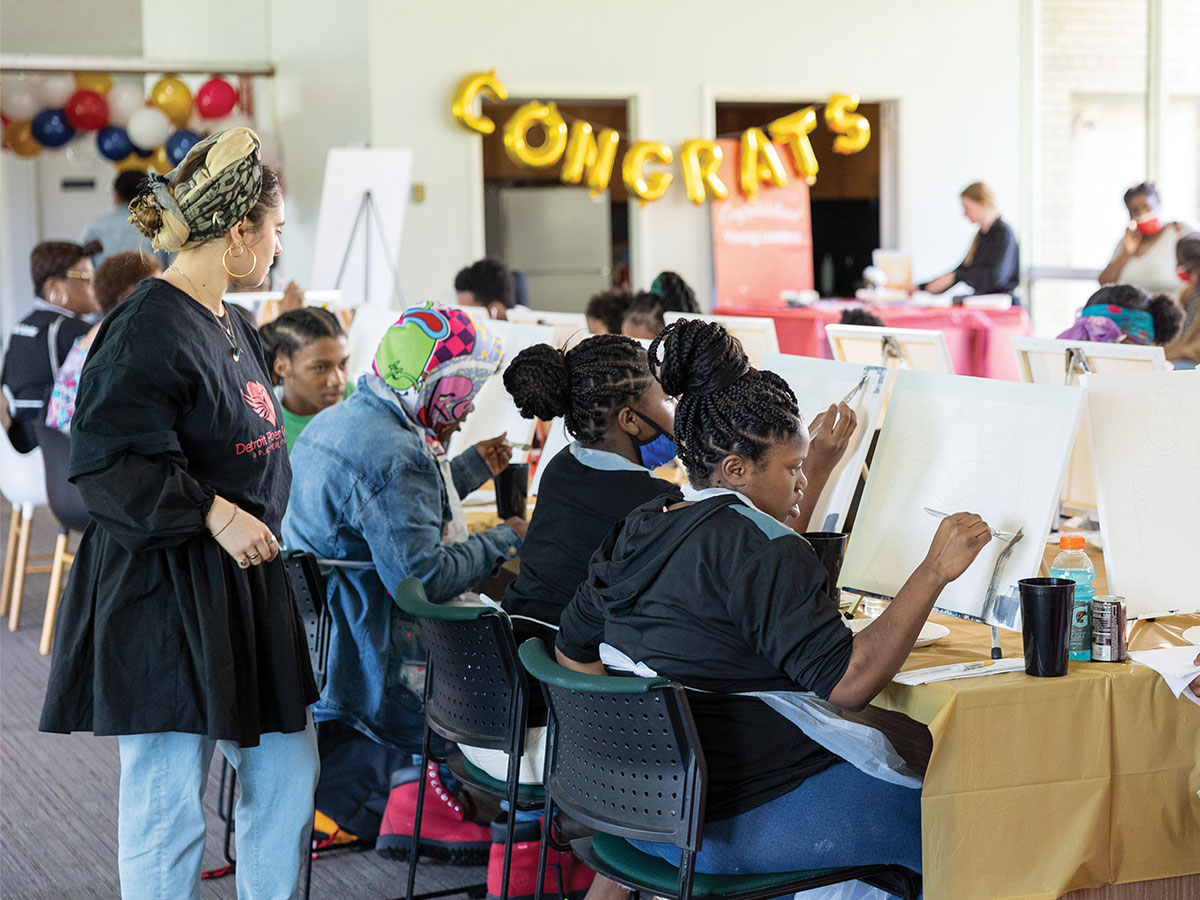
PEAK Grantmaking has always been dedicated to creating communities for grants professionals to embrace our Learn, Share, Evolve Principle. As PEAK looks to its next chapter, we want to leverage our existing peer network structures in new ways to better foster a learning community that embraces and advances adaptive learning processes, and we also want to inspire our members to utilize this approach inside their own organizations. PEAK sees the concepts and practices of emergent learning as a natural fit to advance our work around our Principles for Peak Grantmaking in powerful new ways. Now is the time to define the concepts, qualities, and practices of emergent learning, and how we envision operationalizing it throughout our community and in the sector at large.
Emergent learning defined
Emergent learning is a philosophy and practice that values maintaining communal spaces where people can safely learn, practice, explore, and make mistakes in the pursuit of building knowledge and skills. Unlike traditional, linear modes of learning, which favor studying a problem before executing and strictly committing to a course of action from start to finish, emergent learning is all about adapting while executing. It moves away from discrete engagements that succeed or fail to a loop of testing and experimenting, learning, implementing what you learn, and testing again.

Research and consulting firm Fourth Quadrant Partners—an emergent learning pioneer—describes it as “a field of practice, using a variety of interrelated tools over time as a platform to deepen and institutionalize a group’s ability to consistently achieve or exceed desired outcomes even in the midst of unpredictable challenges.” And in order for organizations to be agile change agents, they need to capture and share what they learn so that the field as a whole can best adapt to community, economic, and societal shifts. This mode of thinking is also social and depends on cultivating cultures of trust that allow for safe, transparent conversation among individuals, teams, grantees, communities, and entire organizations to take place so that knowledge and the change it might inspire can be easily shared and scaled.
Perhaps most importantly, emergent learning helps us move away from the idea, advanced by dominant culture, that learning is time-limited, formal, written down, and driven by a select few who have preset our learning destination. Instead, emergent learning prescribes an ongoing journey where learning is dynamic and driven by the evolving needs of the individual, the community, the organization, and the sector. It is also driven by the mindset that learning is iterative and that lived experience matters, opening the door for knowledge to be sourced from different sectors, functions, and issue areas. It moves us away from a paradigm that limits us—where knowledge is power, held tightly, and shared deliberately, usually as a result of a financial transaction—to a liberated and democratized approach where knowledge is shared intentionally and freely. We move from learning that focuses on the individual to learning that embraces multiple voices and sets us all on a journey to authentically and effectively change the world!
Key qualities and practices
1. Curiosity
 Curiosity uplifts space for constructive inquiry, allowing participants to reframe topics or issues with thoughtful questions and discussions. This provides a way to learn, plan, innovate, maximize impact, and measure success collaboratively. Here are a few ways you can support curiosity:
Curiosity uplifts space for constructive inquiry, allowing participants to reframe topics or issues with thoughtful questions and discussions. This provides a way to learn, plan, innovate, maximize impact, and measure success collaboratively. Here are a few ways you can support curiosity:
- Structure listening-only, inquiry-based meetings, such as reflection sessions.
- Design flexible project plans that include time for exploratory conversations.
- Implement feedback loops that center psychological safety.
2. Transparency
 Emergent learning is rooted in the free exchange of insights to create common understanding and generate discussion that analyzes an issue from multiple perspectives. The sharing of all thoughts and thought processes is encouraged, as each can help to continue the dialogue. Further, these communication skills can be practiced and continuously improved so that, over time, the team collectively builds up its skills for learning better together. Here are a few ways you can support transparency:
Emergent learning is rooted in the free exchange of insights to create common understanding and generate discussion that analyzes an issue from multiple perspectives. The sharing of all thoughts and thought processes is encouraged, as each can help to continue the dialogue. Further, these communication skills can be practiced and continuously improved so that, over time, the team collectively builds up its skills for learning better together. Here are a few ways you can support transparency:
- Share, and conduct an open decision-making process, with those most impacted by the discussion.
- Avoid jargon when articulating what you are, and are not, trying to do.
3. Diversity
 Believing that there is only one way of being and doing things is oppressive, promotes parochialism and ethnocentrism, and robs organizations of the ability to think creatively and to operate with multicultural competency. As Nancy Adler and Allison Gundersen write in International Dimensions of Organizational Behavior, “Multicultural competency invites us to consider that we may have similarities and differences based on our lived experience, and that there are many different and equally feasible ways to reach our shared goal.” The next time you engage in a review of your practices and processes, remember to invite someone with a different perspective to give voice to the issue. Engage in a meaningful discussion and listen deeply to each perspective. Inviting and including divergent and dissenting opinions will enrich the conversation, broaden your understanding, and help to develop even better solutions. Here are a few ways you can support diversity:
Believing that there is only one way of being and doing things is oppressive, promotes parochialism and ethnocentrism, and robs organizations of the ability to think creatively and to operate with multicultural competency. As Nancy Adler and Allison Gundersen write in International Dimensions of Organizational Behavior, “Multicultural competency invites us to consider that we may have similarities and differences based on our lived experience, and that there are many different and equally feasible ways to reach our shared goal.” The next time you engage in a review of your practices and processes, remember to invite someone with a different perspective to give voice to the issue. Engage in a meaningful discussion and listen deeply to each perspective. Inviting and including divergent and dissenting opinions will enrich the conversation, broaden your understanding, and help to develop even better solutions. Here are a few ways you can support diversity:
- Solicit dissenting opinions by seeking out and including diverse perspectives.
- Respect and celebrate how divergent thinking adds to the conversation.
- Make diversity and inclusion a personal commitment.
4. Vulnerability
 Emergent learning encourages participants to embrace the unknown, promoting a creative and dynamic work environment that embraces both experimentation and learning from mistakes. “Errors and mistakes are an inherent part of organizational life, and both planned and unplanned change efforts increase their inevitability,” write the authors of Leading and Learning to Change: The Role of Leadership Style and Mindset in Error Learning and Organizational Change. “Organizations that are better equipped to turn mistakes into future opportunities and make them a part of the organizational learning process will be more adapted to the ever-changing global landscape.” Our failures do not define us. Instead, they help us to identify new opportunities and make fresh connections, and may lead us to unprecedented paths. Leaders can normalize failure by sharing their mistakes and missteps, and by emphasizing how they used the lessons learned to course correct and grow. Here are a few examples of ways to support vulnerability:
Emergent learning encourages participants to embrace the unknown, promoting a creative and dynamic work environment that embraces both experimentation and learning from mistakes. “Errors and mistakes are an inherent part of organizational life, and both planned and unplanned change efforts increase their inevitability,” write the authors of Leading and Learning to Change: The Role of Leadership Style and Mindset in Error Learning and Organizational Change. “Organizations that are better equipped to turn mistakes into future opportunities and make them a part of the organizational learning process will be more adapted to the ever-changing global landscape.” Our failures do not define us. Instead, they help us to identify new opportunities and make fresh connections, and may lead us to unprecedented paths. Leaders can normalize failure by sharing their mistakes and missteps, and by emphasizing how they used the lessons learned to course correct and grow. Here are a few examples of ways to support vulnerability:
- Ask for feedback and actively listen to the response.
- Be flexible with your timelines, intentions, and desired impact.
- Share what was learned from a mistake and ask follow-up questions.
- Pilot a new project or process, then study and share the results.
- Remember that change will have a psychological effect on stakeholders.
5. Collaboration
 Every person, regardless of their position or background, has valuable contributions to make. And when you embrace and uplift diverse voices, you encourage participants to lead from their seats, take ownership of their contributions, and unlock the incredible power of collaborative knowledge. Systems scientist and Massachusetts Institute of Technology Senior Lecturer Peter Senge made the following observation in his book The Fifth Discipline: “Team learning is the process of aligning and developing the capacity of a team to create the results its members truly desire.” The collaborative nature of emergent learning ensures that an individual, organization, or community can sustain the changes it makes. If only a few people are committed to change, the organization will not progress. The goal is to evolve processes, policies, and practices to reinforce change. Here are a few ways you can support collaboration:
Every person, regardless of their position or background, has valuable contributions to make. And when you embrace and uplift diverse voices, you encourage participants to lead from their seats, take ownership of their contributions, and unlock the incredible power of collaborative knowledge. Systems scientist and Massachusetts Institute of Technology Senior Lecturer Peter Senge made the following observation in his book The Fifth Discipline: “Team learning is the process of aligning and developing the capacity of a team to create the results its members truly desire.” The collaborative nature of emergent learning ensures that an individual, organization, or community can sustain the changes it makes. If only a few people are committed to change, the organization will not progress. The goal is to evolve processes, policies, and practices to reinforce change. Here are a few ways you can support collaboration:
- Articulate the rules of engagement in plain language.
- Invite stakeholders to cocreate valued behavior and norms.
Harnessing the power of emergent learning

Grants management professionals are already activated as emergent learners, even though they might not think of themselves as such. This mindset shows up in various practices in our organizations and across the larger network and field. Remember those 10-year plans we would spend months (or even years) developing? We quickly got to a point where, by the time the plan launched, the world looked very different and our thinking was out of date. Now, we create flexible two-to-three-year frameworks supported by shorter-term plans: tools that can develop and adapt in response to real-time events and ensure that we meet current and emerging needs.
The philanthropic sector put emergent learning principles into practice with the onset of the COVID-19 pandemic. Imagine the detriment to the sector and the organizations and communities we support if, after March 2020, funders had all continued to operate in exactly the same way as before because they “had” to follow the plan. Instead, organizations learned how to do things differently, how to get money into our communities more quickly, how to keep staff safe while continuing to do the work. Philanthropy made big changes and small changes, asked questions of one another for help, and shared what they learned with peers. In a short space of time, we all did our work differently and without a playbook. This collective experience demonstrated that the sector can flex its emergent learning muscle. Now is the time for the sector to build that muscle to better serve a greater good.
Ultimately, emergent learning creates a sector that is more trusting, effective, and efficient. It leads to more creative, constructive questions and more collaborative thinking that can strengthen everything from strategy development to work plan creation. Adopting emergent learning encourages psychologically safer spaces that empower people to dream bigger and learn together without fear of failure or conflict. It shifts thinking and provides the time and space to evaluate and reflect with an eye towards lessons learned instead of fixed benchmarks. It also recognizes and embraces the fact that our work changes and the structures needed to do our work should also change.






